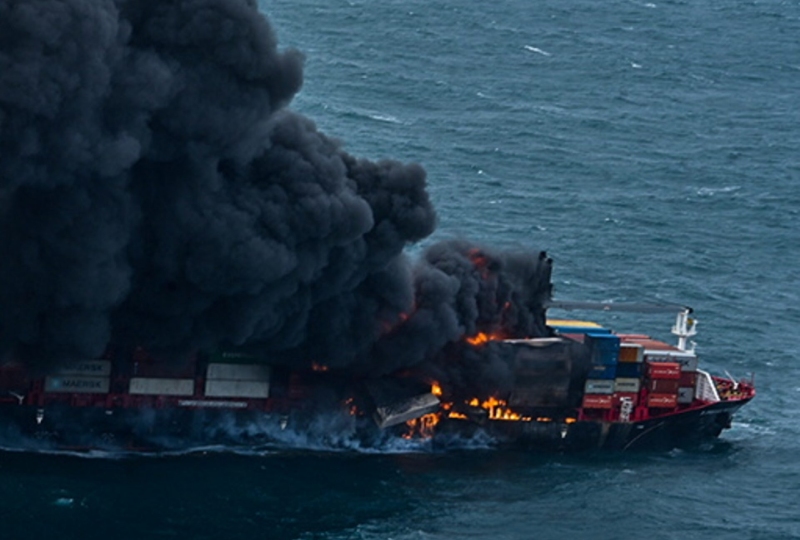A cargo ship carrying approximately 3,000 vehicles has been abandoned after catching fire off the coast of Alaska, prompting a complex maritime emergency and raising environmental concerns. The U.S. Coast Guard confirmed that all crew members were safely evacuated, but the vessel remains adrift and ablaze in the Gulf of Alaska.
The ship, identified as the MV Titan Blaze, issued a distress call late Monday evening after a fire broke out in one of its cargo holds. The blaze quickly spread, and despite efforts by the crew to contain it, they were forced to abandon the vessel as conditions worsened. Helicopters and rescue boats were dispatched from Kodiak, and all 33 crew members were airlifted to safety without reported injuries.
The MV Titan Blaze had departed from a West Coast port and was en route to Asia when the incident occurred roughly 200 miles southwest of Kodiak Island. Authorities reported that the ship was carrying a mix of new and used vehicles, including electric models with lithium-ion batteries, which are suspected to have contributed to the intensity of the fire.
A Coast Guard spokesperson stated that the situation remains dangerous, with the fire still uncontrolled and the ship at risk of sinking or leaking fuel and hazardous materials into the ocean. “We are closely monitoring the vessel’s drift path and environmental impact,” the spokesperson said. “Efforts are underway to assess firefighting options and develop a salvage plan.”
Maritime authorities have raised concerns about the potential for an ecological disaster if the ship were to break apart or discharge oil and battery chemicals into the surrounding waters. The National Oceanic and Atmospheric Administration (NOAA) has been consulted to forecast the vessel’s drift and advise on containment measures.
Experts noted that fires on car carriers are particularly difficult to manage due to the density and flammability of their cargo, especially electric vehicles. Similar maritime incidents in recent years have drawn attention to safety protocols for shipping battery-powered cars.
The ownership and cargo details of the MV Titan Blaze have not been fully disclosed, but the ship is believed to be operated by a global logistics firm with a history of transporting automobiles across Pacific trade routes. Insurance industry analysts anticipate significant losses, with the cargo value alone estimated in the tens of millions of dollars.
Salvage teams are being mobilized from the Pacific Northwest and Japan, though reaching the ship in time to contain the blaze or tow it to safety remains uncertain. Weather conditions in the Gulf of Alaska are notoriously unpredictable, which could complicate any recovery or firefighting operation.
Environmental groups have urged the U.S. government to act swiftly to prevent a potential spill, warning that Alaska’s marine ecosystems are uniquely sensitive to chemical and oil contamination. “This could be the next major maritime pollution incident if not handled urgently,” one advocacy group warned.
As of Wednesday, the Coast Guard continues to monitor the vessel from the air and sea while coordinating with international partners to prepare a salvage response. No timeline has been given for when the fire might be extinguished or the ship brought under control. The incident has already sparked calls for stricter international regulations on transporting high-risk cargo like electric vehicles.
Investigations are underway to determine the fire’s cause and whether safety protocols were properly followed. Meanwhile, the abandoned MV Titan Blaze continues to burn, drifting slowly in the North Pacific, a grim reminder of the challenges modern shipping poses to safety and the environment.
Source; Gulf Daily News



